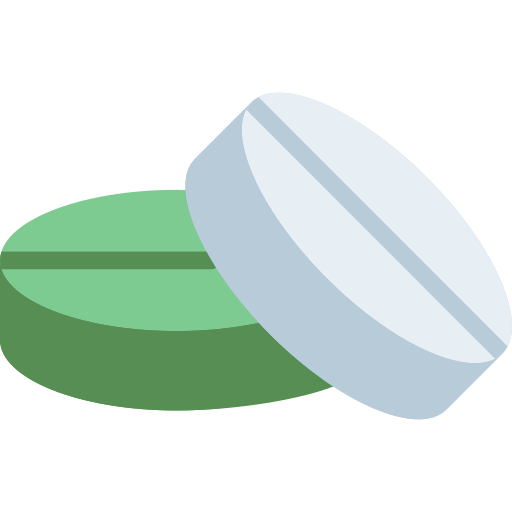
Esomeprazole
20 mg
Renata Limited
Product Details
{"indications":"\"Esomeprazole is indicated:\\n\\n\\nTo relieve from chronic heartburn symptoms and other symptoms associated with GERD\\nFor the healing of erosive esophagitis\\nFor maintenance of healing of erosive esophagitis\\nIn combination with amoxicillin and clarithromycin for eradication of Helicobacter pylori infection in patients with duodenal ulcer disease.\\nZollinger-Ellison Syndrome\\nAcid related Dyspepsia\\nDuodenal & Gastric ulcer\"","description":"\"Esomeprazole is a proton pump inhibitor that suppresses gastric acid secretion by specific inhibition of the H+\\\/K+-ATPase in the gastric parietal cell. Esomeprazole (S-isomer of omeprazole) is the first single optical isomer of proton pump inhibitor, provides better acid control than racemic proton pump inhibitors.\\n\\nAbsorption: Esomeprazole capsules contain an enteric-coated pellet formulation of esomeprazole magnesium. After oral administration peak plasma levels (Cmax) occur at approximately 1.5 hours (Tmax). The Cmax increases proportionally when the dose is increased, and there is a three-fold increase in the area under the plasma concentration-time curve (AUC) from 20 to 40 mg. At repeated once daily dosing, the systemic bioavailability is approximately 90% compared to 64% after a single dose. The AUC after administration of a single dose of esomeprazole is decreased by 33-53% after food intake compared to fasting conditions. Esomeprazole should be taken at least one hour before meals. \\n\\nDistribution: Esomeprazole is 97% bound to plasma proteins. Plasma protein binding is constant over the concentration range of 2 20 mmol\\\/L. The apparent volume of distribution at steady state in healthy volunteers is approximately 16 L.\\n\\nMetabolism: Esomeprazole is extensively metabolized in the liver by the cytochrome P450 (CYP) enzyme system. The metabolites of esomeprazole lack anti-secretory activity. The major part of esomeprazole\\u2019s metabolism is dependent upon the CYP2C19 isoenzyme, which forms the hydroxy and desmethyl metabolites. The remaining amount is dependent on CYP3A4 which forms the sulphone metabolite.\\n\\nExcretion: The plasma elimination half-life of esomeprazole is approximately 1\\u20131.5 hours. Less than 1% of parent drug is excreted in the urine. Approximately 80% of an oral dose of esomeprazole is excreted as inactive metabolites in the urine, and the remainder is found as inactive metabolites in the faeces. \\n\\nCombination Therapy with Antimicrobials: Esomeprazole magnesium 40 mg once daily is given in combination with clarithromycin 500 mg twice daily and amoxicillin 1000 mg twice daily for 7 days. The mean steady state AUC and Cmax of Esomeprazole increased by 70% and 18%, respectively, during triple combination therapy compared to treatment with Esomeprazole alone. The pharmacokinetic parameters for clarithromycin and amoxicillin are similar during triple combination therapy and administration of each drug alone. However, the mean AUC and Cmax for 14-hydroxyclarithromycin are increased by 19% and 22%, respectively, during triple combination therapy compared to treatment with clarithromycin alone. This increase in exposure to 14-hydroxyclarithromycin is not considered to be clinically significant.\"","pharmacology":"\"\"","dosage":"\"\"","interaction":"\"\"","contradiction":"\"Esomeprazole is extensively metabolized in the liver by CYP2C19 and CYP3A4. In vitro and in vivo studies have shown that Esomeprazole is not likely to inhibit CYPs 1A2, 2A6, 2C9, 2D6, 2E1 and 3A4. No clinically relevant interactions with drugs metabolized by these CYP enzymes would be expected. Drug interaction studies have shown that Esomeprazole does not have any clinically significant interactions with phenytoin, warfarin, quinidine, clarithromycin or amoxicillin.\\n\\nEsomeprazole may potentially interfere with CYP2C19, the major Esomeprazole metabolizing enzyme. Co-administration of Esomeprazole 30 mg and diazepam, a CYP2C19 substrate has resulted in a 45% decrease in clearance of diazepam. Increased plasma levels of diazepam have been observed 12 hours after dosing and onwards. Esomeprazole inhibits gastric acid secretion. Therefore, Esomeprazole may interfere with the absorption of drugs where gastric pH is an important determinant of bioavailability (e.g., ketoconazole, iron salts and digoxin).\\n\\nCo-administration of oral contraceptives, diazepam, phenytoin, or quinidine do not seem to change the pharmacokinetic profile of Esomeprazole.\\n\\nCombination Therapy with Clarithromycin: Co-administration of esomeprazole, clarithromycin, and amoxicillin has resulted in increases in the plasma levels of esomeprazole and 14-hydroxyclarithromycin.\"","side_effects":"\"Esomeprazole is contraindicated in-patient with known hypersensitivity to any of the formulation.\"","pregnancy":"\"The most frequently occurring adverse events reported with Esomeprazole include headache, diarrhoea, nausea, flatulence, abdominal pain, constipation and dry mouth. There are no difference in types of related adverse events seen during maintenance treatment upto 12 months compared to short term treatment.\"","precautions":"\"There are no adequate and well-controlled studies in pregnant women. Animal studies have revealed no teratogenic effects. The excretion of esomeprazole in milk has not been studied. Breast-feeding should be therefore be discontinued if the use of esomeprazole is considered essential.\"","therapeutic":"\"General: Symptomatic response to therapy with esomeprazole does not preclude the presence of gastric malignancy.\\n\\nInformation for patients: Esomeprazole capsules should be taken at least one hour before meals. For patients who have difficulty swallowing capsules, one tablespoon of applesauce can be added to an empty bowl and the Esomeprazole capsules can be opened, and the pellets inside the capsule carefully emptied onto the applesauce. The pellets should be mixed with the applesauce and then swallowed immediately. The applesauce used should not be hot and should be soft enough to be swallowed without chewing. The pellets should not be chewed or crushed. The pellet\\\/applesauce mixture should not be stored for future use. Antacids may be used while taking esomeprazole.\"","storage":"\"Paediatric Use: Safety and effectiveness in paediatric patients have not been established.\\n\\nGeriatric Use: No overall differences in safety and efficacy have been observed between the elderly and younger individuals, and other reported clinical experience has not identified differences in responses between the elderly and younger patients, but greater sensitivity of some older individuals cannot be ruled out\\n\\nHepatic Insufficiency: No dosage adjustment is recommended for patients with mild to moderate hepatic insufficiency. However, in patients with severe hepatic insufficiency, a dose of 20 mg once daily should not be exceeded.\\n\\nRenal Insufficiency: The Pharmacokinetics of Esomeprazole in patients with renal impairment are not expected to be altered relative to healthy volunteers as less than 1% of Esomeprazole is excreted unchanged in the urine.\""}
-
Support 24/7
Call us anytime -
100% Safety
Only secure payments